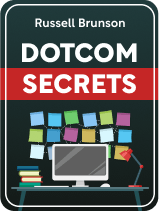

This article is an excerpt from the Shortform book guide to "Dotcom Secrets" by Russell Brunson. Shortform has the world's best summaries and analyses of books you should be reading.
Like this article? Sign up for a free trial here.
How do you build an effective sales funnel? What should be the first step in your sales funnel pathway?
According to Russel Brunson, the author of Dotcom Secrets, sales funnels work best with email marketing. He recommends creating a lead magnet to collect customers’ emails so you can market to them directly.
Here are some tips on how to send effective sales funnel emails.
Sales Funnel Email Marketing
Brunson argues that the end goal of all your marketing is to move potential customers onto marketing channels where you can directly message them for free. To this end, Brunson recommends creating something valuable that you can offer for free as an incentive for people to join your email list. The more valuable it is, the more likely users will be to trade their email addresses for it. For example, you could offer your free ebook of travel tips to anyone who joins your email list.
| Origins of Permission Marketing Brunson’s direct marketing strategy is known as “permission marketing,” a term coined by Seth Godin in his 1999 book of the same name. It’s called permission marketing because you only market to potential customers who’ve given you permission to send them messages they’re genuinely interested in receiving. Godin contrasts permission marketing with interruption marketing, which includes any form of advertising that customers don’t ask for and don’t want to see, such as television commercials, online banner ads, and advertisements on social media. Although Brunson recommends using these channels to build your email list, he acknowledges that the end goal of this kind of interruption marketing is to enable permission marketing, which is more profitable. Like Brunson, Godin recommends offering your audience a freebie in exchange for their email address, but he also highlights a new, important aspect of this strategy: To retain customer trust, be honest and open about what you’d get from them in return. The second the customer sees you do something that they didn’t give you explicit permission to do—for instance, surreptitiously gathering their data to sell to a third party—you’ll lose their trust, and they’ll revoke their permission by opting out of your emails. |
The 2 Types of Direct Communication
Once prospects have signed up for your email list, Brunson recommends sending them two types of sales funnel emails, each of which engages a different kind of customer:
Type #1: Immediate Sell
When potential customers sign up for your email list, you’ll want to convert them into paying customers as soon as possible. Brunson recommends sending a series of emails that get your audience to emotionally connect with your brand.
To do this, tell the personal story of how you established your brand and explain the personal relationship you want your business to have with its customers. Customers will value your business more if they see you as a real, relatable human. For example, perhaps you had a study abroad experience in college that changed your life and motivated you to live nomadically around the world for 20 years. Now, you want to sell the expert travel knowledge you picked up over the years to help others broaden their minds and change their lives.
Reveal these story details in a series of emails over the course of several days to deepen readers’ long-term interest. Furthermore, provide links to one of your sales funnels throughout the email chain, so if a reader ever feels sufficiently inspired to invest in you, they know what to do next.
| How to Write Emails That Feel Personal Brunson recommends telling the personal story behind your business to customers so they can relate to you emotionally. However, this honest, vulnerable content might not be enough to connect with your potential customers if delivered blandly or impersonally—you’ll also need to present your emails in an intimate, personal way to connect with people as effectively as possible. Here are some tips on how to do this: – Ask subscribers to register their first name when signing up for your email list, and use automated tools to insert their name throughout your emails so it reads as if you sent it to them personally. – Similarly, set up a system that places your first name as the “sender” of your emails rather than the name of your company. This helps your emails stand out from other branded messages. – Use real photos of you, your employees, or any other relevant people to instantly come across as more trustworthy to readers. Multiple studies support the effectiveness of this strategy. – Make sure not to place your links to your sales funnels at the very beginning of your email, which may make it seem more like an advertisement than a personal message. |
Type #2: Ongoing Engagement
Sometimes, despite your attempts to spur potential customers into action, they won’t be ready to make an immediate investment. In this case, Brunson explains that your goal becomes keeping a channel of communication open until they’re ready to buy something. Send regular emails that entertain or provide consistent value to your readers while simultaneously linking interested customers to your sales funnels. These ongoing emails are also a way to push previous customers to make further purchases.
Brunson recommends messaging your email list every day. Every email you send will lead to purchases, so any time you skip a day, you’re losing sales. You may worry that sending too many emails will push readers to unsubscribe, but if your emails are truly entertaining or useful (or both), people will be glad to receive them.
| Ongoing Engagement on Social Media In Jab, Jab, Jab, Right Hook, Gary Vaynerchuk explains how to use this same strategy on social media rather than via email list. Instead of including a link to one of your sales funnels in every message, as Brunson recommends, Vaynerchuk advises mostly posting branded messages with no obvious purpose—interesting content that builds your brand image in the minds of your readers. After you’ve engaged customers with these posts for some time, your post that includes a call to action will be more effective. This is because offering your audience value while asking nothing in return makes them feel like they need to give back somehow, which motivates them to act once you do ask for something. Like Brunson, Vaynerchuk recommends engaging with your audience every day, and he elaborates that this schedule allows you to base your content on current events and the most recent trends. By tying your messages to topics that people already want to talk about, you’ll gain more attention and appear more relatable. |

———End of Preview———
Like what you just read? Read the rest of the world's best book summary and analysis of Russell Brunson's "Dotcom Secrets" at Shortform.
Here's what you'll find in our full Dotcom Secrets summary:
- What separates the million-dollar startups from the unprofitable failures
- Why your company's website should be organized as a sales funnel
- How to attract customers to your site and make a compelling marketing message






